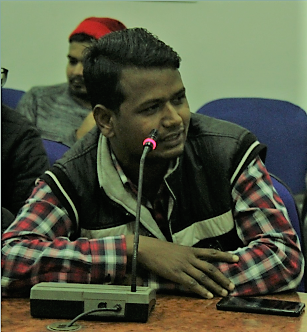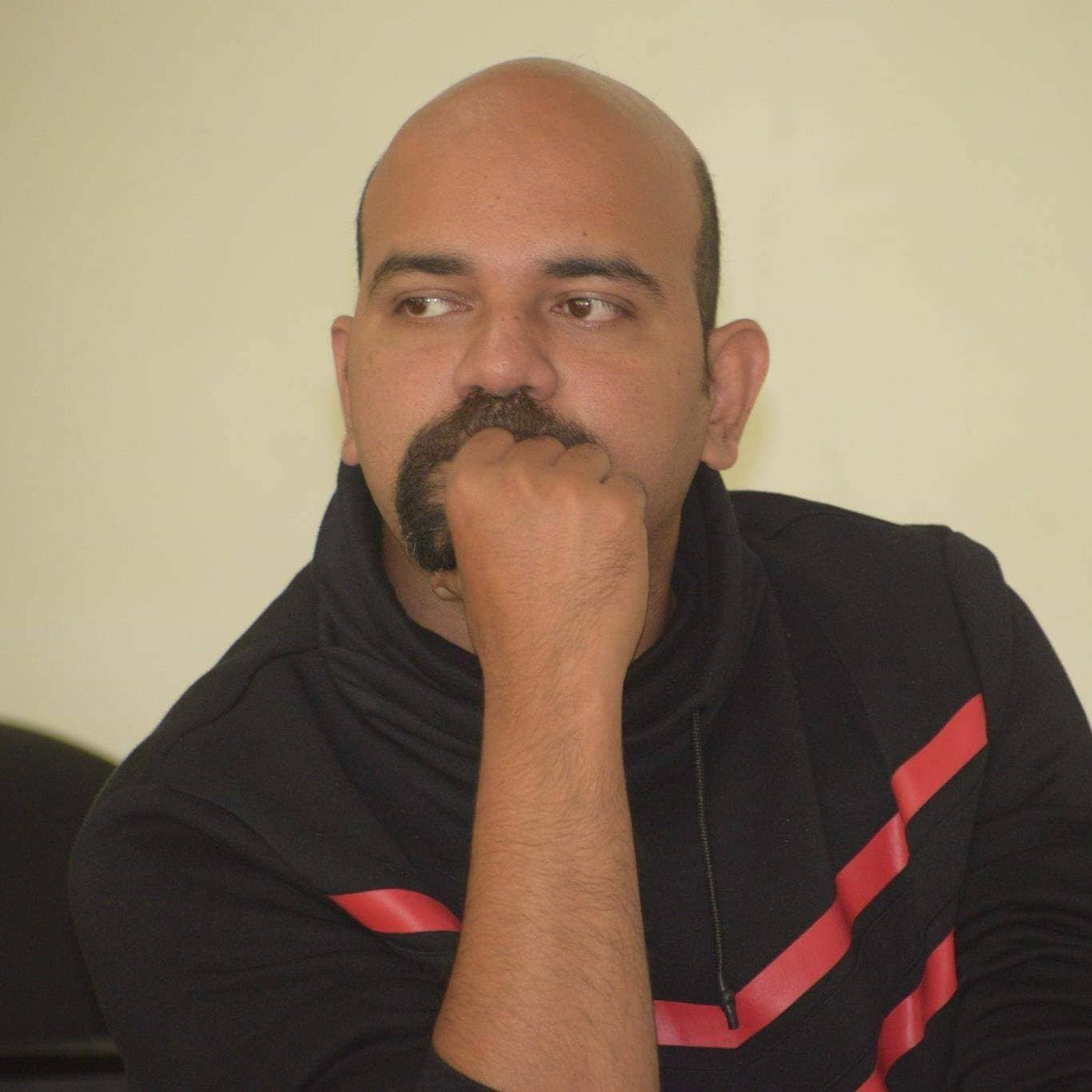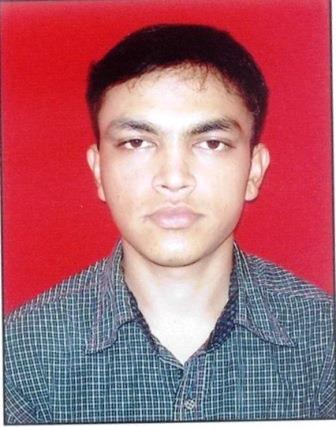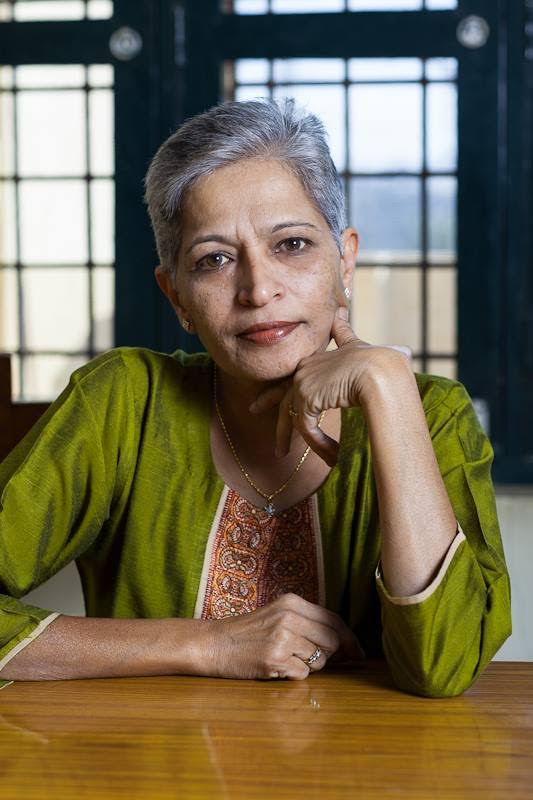Vinod Kumar
 Dr. B. R. Ambedkar was an economist, a fact which has been neglected by Indian academia, as well as not recognised by the left liberal intellectuals of this country. During the freedom movement, Ambedkar’s academic contribution was not only intellectual, but also a fight against the unjust colonial economic arrangement which was exploiting Indian economy, badly affecting the peasant class in particular and the entire country in general.
Dr. B. R. Ambedkar was an economist, a fact which has been neglected by Indian academia, as well as not recognised by the left liberal intellectuals of this country. During the freedom movement, Ambedkar’s academic contribution was not only intellectual, but also a fight against the unjust colonial economic arrangement which was exploiting Indian economy, badly affecting the peasant class in particular and the entire country in general.
His D.Sc. dissertation The Problem of the Rupee: Its Origin and its Solution, dealt with the unjust ‘gold-exchange standard’ which was benefiting only the colonial masters, and he suggested a new currency exchange model by criticising the major economist of the time, Keynes, and his work Indian Currency and Finance. Moreover, in his Ph.D thesis The Evolution of Provincial Finance in British India, he critically examined the finance system in relation to Centre-Province financial relationships in British India during the period 1833 to 1921 (Jadhav, 1991: 980-81 [1]). His thesis exposed the unjust and exploitive public finance system of the British government which was mostly affecting the lower strata of the society, mostly peasants. It is very difficult to find out how many scholars from the left, liberal, and right spectrum were aware about this macro-economics of colonial capitalism.
Ambedkar believed that the thrust of strategy for India’s economic development should be on the eradication of poverty, elimination of inequalities and ending exploitation of the masses. He accepted the Marxian view that there is exploitation in the world; that the poor are exploited by the rich; and that the enslavement of the masses by the privileged few leads to perpetuation of poverty and its attendant suffering. However, Ambedkar did not sympathise with the Marxist paradigm of development (Jadhav, 1991: 982 [1]). He led his own campaign against Brahmanism and capitalism with notions of democracy and human rights by analysing the peculiar nature of Hindu society, and rejected the totalitarian model of communist regimes.
Ambedkar was well aware of the demerits of capitalism and he therefore suggested a fight against capitalism as well with his own understanding of the economy. He established the Independent Labour Party (ILP) in 1936, against the Brahmanical and capitalist structures in society. The ILP stood for the Indian labour class while also stressing on the nature of caste structures and the need for their annihilation. The aims and objectives of the party were more visionary and pragmatic than those of any other so-called communist parties of India. Moreover, to a large extent, the ideas of a labour party designed by Ambedkar were followed in post-independence India. Here are some of its declared aims and objectives: state sponsored industrialisation, strong labour laws to protect factory workers which favoured legalisation to provide remunerative wages, fixing minimum hours of work, leave with pay and sanitary dwellings, abolition of Jagirdari system, and fight against the exclusion of Dalits from lucrative jobs in industry. Apart from these, he strongly emphasized and demanded maternity leave for women with pay and facilities. In short, he was a strong proponent of state socialism.
Ambedkar’s ideas, politics, strategy and vision were his own, they were not derivative unlike the politics of Indian communists. No one can deny the originality in his politics and work. In independent India, he tried his best to ameliorate the conditions of the suffering masses, but the Congress and upper-caste ruling elite systematically excluded him from playing an important role in independent India. Take the example of Congress opposition to the ‘Hindu Code Bill’ which was drafted and presented by Ambedkar in Parliament. His vision was hampered by Savarna Congress leadership. What communist leaders did to Ambedkar is also not hidden. Communist leaders like Dange and others always opposed Ambedkar, and mobilized people against him during the Constituent Assembly election by saying ‘you waste your vote but don’t vote for Ambedkar’. You can imagine the struggle and life of Ambedkar in that critical juncture of history.
Jignesh Mevani, who claims to be a leader of Dalits in Gujarat, said in a recent interview held by NewsClick that Dalit-Bahujan (Ambedkarite) organisations such as BAPSA and others do not have concern for and understanding of class politics. He asked – “Why don’t they form trade unions, who has denied them in doing that?” Moreover, he defended the parliamentary Left on the question of caste by arguing that communist parties and discourse have always been concerned with the problems of caste in India. Moreover, several times, with his Left brigades, he criticised even Ambedkar illogically without any rationale. By analysing the arguments of Jignesh Mevani and his newly emerged, small political sphere, one can reach two conclusions: first, he is ignorant about Ambedkarite politics and even basic knowledge of Ambedkar, or second, he is against Ambedkarite politics and is just serving the interests of Congress and parliamentary Left. Basically, he is making two propositions which are interconnected: Ambedkarites do not have an understanding of and they are not concerned about capital and class politics and the Left is right because they are concerned about both.
As mentioned earlier, Ambedkar was very well aware of both caste and class, and he also found a mechanism to fight these problems. Even post-Ambedkar, Ambedkarite politics has followed the same legacy. However, the Congress system and its hegemony, which prevailed in independent India till 1977, resulted in a gap for Ambedkarite politics. With the emergence of BAMCEF and BSP, the caste and class concerns were again interlinked. These parties and movements have always demanded the redistribution of land. Their slogans like “jiski jitni sankhya bhari, uski utni hissedari” (people’s representation in proportion to numbers) and “jo jameen sarkaari hai wo jameen hamari hain” (the government/nation’s land is our land), show the politics of capital and economy, which were not borrowed from the so-called communist parties of India, but emerged from their own genealogical, political understanding. Just as Ambedkar had, in his time, faced political rivals from the spectrum of left, right and centre, Ambedkarite politics has been facing the same ever since. Just as Ambedkar’s contributions to economics in his writings and politics have been ignored, BAMCEF and BSP’s contribution is also unrecognised. Although BSP does not claim to be a communist party, its contribution in distributing ceiling land to Dalits and other marginalised communities has not been taken seriously and ignored by academia, the media and other political parties such as Congress and communist parties. The Mayawati government in UP was one of the best in administration during her four terms. Dalits and other marginalised felt secure and realised their dignity. It was the BSP that rediscovered the hidden icons of great social and anti-caste revolutionary movements and brought them to the masses.
Today, if we are seeing a wide range of Ambedkarite discourses across the country, and Ambedkar has been taken seriously by many parties, it was the Dalit-Bahujan assertion which compelled them to take Ambedkar and the caste problem seriously. From Maharashtra to UP and rest of India, the Ambedkarite movement has developed a critical mass. This mass is leading a fundamental change which is social and cultural, and posing a threat to larger Hindutva politics of RSS and BJP. There has been a history of the revolution and counter-revolution between Dalit-bahujan and Brahmanical forces. Currently, every day there are the cases of atrocities on Dalits because of their distinct cultural and social manifestation, and atrocities on Dalits are particularly rampant where assertion is increasing. So, there is a continued struggle against Brahmanism by the Ambedkarite forces.
Second, Jignesh is either ignorant of the political history of parliamentary Left or hiding the reality of what parliamentary Left has done to the lower caste people. When he said that the Left has taken the caste issue seriously alongside with class, then he is either proving his ignorance or lying. Let us begin by considering the history of communists dealing with caste. There have been two states in which communists have been in power: in West Bengal for about 34 years and in Kerala, still ruling the state. Soon after Independence, so-called Hindus were dislocated from East Pakistan to West Bengal where upper caste refugees were settled in the government colonies made by the Britishers, and Shudras were left behind to their own fate, dumped into refugee camps, where they were dying of hunger. Subsequently, they were dislocated from West Bengal through the Andaman Nicobar rehabilitation programme and Dandakaranya rehabilitation programme. The Congress had its own double interest in rehabilitating them in these two places: first, to control the tribes and their lands and second, to make harsh land cultivable. They were treated there worse than animals. Both of the programmes were opposed by the communists. They argued that ‘Bengalis belong to Bengal, Bengal is their homeland, they will remain here’. It was the so-called Indian communists who betrayed the Namo-Shudras. A large number of Namo-shudras settled at Marichjhapi, an island in West Bengal, the land without owner in the communist regime, where they should have been treated as equal human beings. But what happened to them? When communists came to power in West Bengal, they treated Namo-shudras inhumanly. In 1979, one of the most inhuman massacres took place, and ironically, it was led by the State. More than ten thousand Namo-shudras were brutally killed by the paramilitary forces directed by the Jyoti Basu. This brutal massacre has been systematically erased by the upper-caste Bengali academicians. The victims and survivors of the massacre such as Manoranjan Byapari have given a detailed analysis of the Marichjhapi massacre in their writings. Jignesh must know that even the existence of Dalits has been intolerable to the so-called communists.
Another illusion Jignesh has is that communists in India are following communist ideology. He seems to be ignorant of the fact that communists of India have compromised and degenerated the ideology. What does he have to say about Nandigram and Singur massacre? Land belonging to the Dalits and Muslims was occupied by the state and sold to the Tata company. It clearly shows that for CPIM not only communist but also socialist ideology became obsolete. Inviting capitalists like the Tata company and others to invest in Bengal and spread capitalism in the state ruled by communists – what should it be called? What was the political economy of the state of Bengal, and what was the mode of production during their rule? Forget about communism, they could not even establish a welfare state. The Sachar committee and Ranganath Mishra commission reports depict the deplorable conditions of Muslims in West Bengal. Apart from these facts, the entire state machinery, economy, academia and bureaucracy is controlled by the upper-castes. Moreover, their anti-reservation position can be analysed from the beginning of independent India. During Mandal commission, their protest against OBC reservations is not even a hidden fact. Just like the Sangh Parivar, these communist parties are also intolerant and authoritarian. Take the example of Kerala, where most of the political killings are happening. Not only Ambedkarite organisations, but other communist parties are also facing violence instigated by CPIM.
When the entire resources of the country are occupied and controlled by a particular caste and class, then the question of redistribution becomes pertinent. In India, it is easy to see which caste is controlling the entire resources and economy. From political power to bureaucracy, from land to industry, from media to academia, it is the upper castes. When this is the condition, then the political language will be surrounded with caste and the question of representation with redistribution of the resources become inevitable. If the upper castes are consciously and unconsciously benefiting from their social location, then their privilege will be questioned through the caste lens. Ambedkarite politics has always been labelled casteist by the left liberal discourse and political parties. The very Idea which fights against caste and inequality, and for liberty and egalitarian society is termed as sectarian. This is not only confined to India. If we see the struggles of the oppressed across the world, burden of evil in society falls on their shoulders. In the struggle of Afro-American people against white supremacy and racial injustice, it was the blacks who were labelled as racist not whites. Any kind of marginalized people fighting against marginalisation will be labelled as ‘anti’, anti to everything, ‘anti-state’ anti-society, and ‘anti-peace’. They themselves become the social evil in the eyes of the ruling caste, class, elite, or race.
In university spaces like JNU, not only the open Brahmanical forces such as RSS, BJP, ABVP but also parliamentary communists often malign the struggle of Ambedkarite forces. The strategy of the Left politics in JNU is based on false propaganda, rumour mongering, and character assassination of the Ambedkarite politics and activists. During the JNUSU election of 2016, a video-clip of Birsa Ambedkar Students’ Association (BAPSA) presidential candidate, in which he was smoking a cigarette, was circulated by the some Left organisations to malign his image. Moreover, he was labelled as anti-upper caste, particularly anti-upper-caste women. These Left organisations often campaign against BAPSA by attempting to reduce it to a casteist organisation which is against the upper-castes. They adopt a caste strategy to mobilise students despite being an organisation which claims to be Left, but denies the problems of caste. They send their Muslim cadre to canvass the Muslims students, Dalits to Dalit students, and Adivasis to Adivasi students and OBCs to OBC students during the election campaign.
The news debate on News-Click where some left brigade and Jignesh Mevani showed their ignorance and lies are the part of this larger understanding and misunderstanding of the parliamentary Left about the Ambedkarite politics in India.
~
References
1. Jadhav, Narendra (1991): “Neglected Economic Thought of Babasaheb Ambedkar”, April 13, Economic & Political Weekly, Vol.26, No.15, pp 980–982
~~~
Vinod Kumar is a Phd scholar at Center for West Asian Studies, School of International Studies, Jawahar Lal Nehru University.










